Removal Procedure
Caution: Refer to Approved Equipment for Collision Repair Caution in the Preface section.
Caution: Refer to Glass and Sheet Metal Handling Caution in the Preface section.
Caution: Refer to Collision Sectioning Caution in the Preface section.
- Disable the SIR system. Refer to SIR Disabling and Enabling .
- Disconnect the negative battery cable. Refer to Battery Negative Cable Disconnection and Connection .
- Remove all related panels and components.
- Repair as much of the damage as possible to factory specifications. Refer to Dimensions - Body .
- Note the location and remove the sealers and anti-corrosion materials from the repair area, as necessary. Refer to Anti-Corrosion Treatment and Repair .
- Perform additional sectioning procedures as necessary. Refer to Structure Identification .
- Measure 70 mm (2 3/4 in) down from the lower fender bracket (1). Mark a horizontal line.
- Cut the panel in the locations where sectioning is to be performed.
- Locate and drill out all factory welds. Note the number and location of the welds for installation of the service part.
- Remove the damaged hinge pillar.
- Cut and remove 30 mm (1 3/16 in) from the flanges on either side of the remaining section of the original pillar. Cut 5 mm (3/16 in) wide gaps in the bottom corners.
- Step the tabs (1) inward to allow the door frame opening service section to fit over the original hinge pillar.
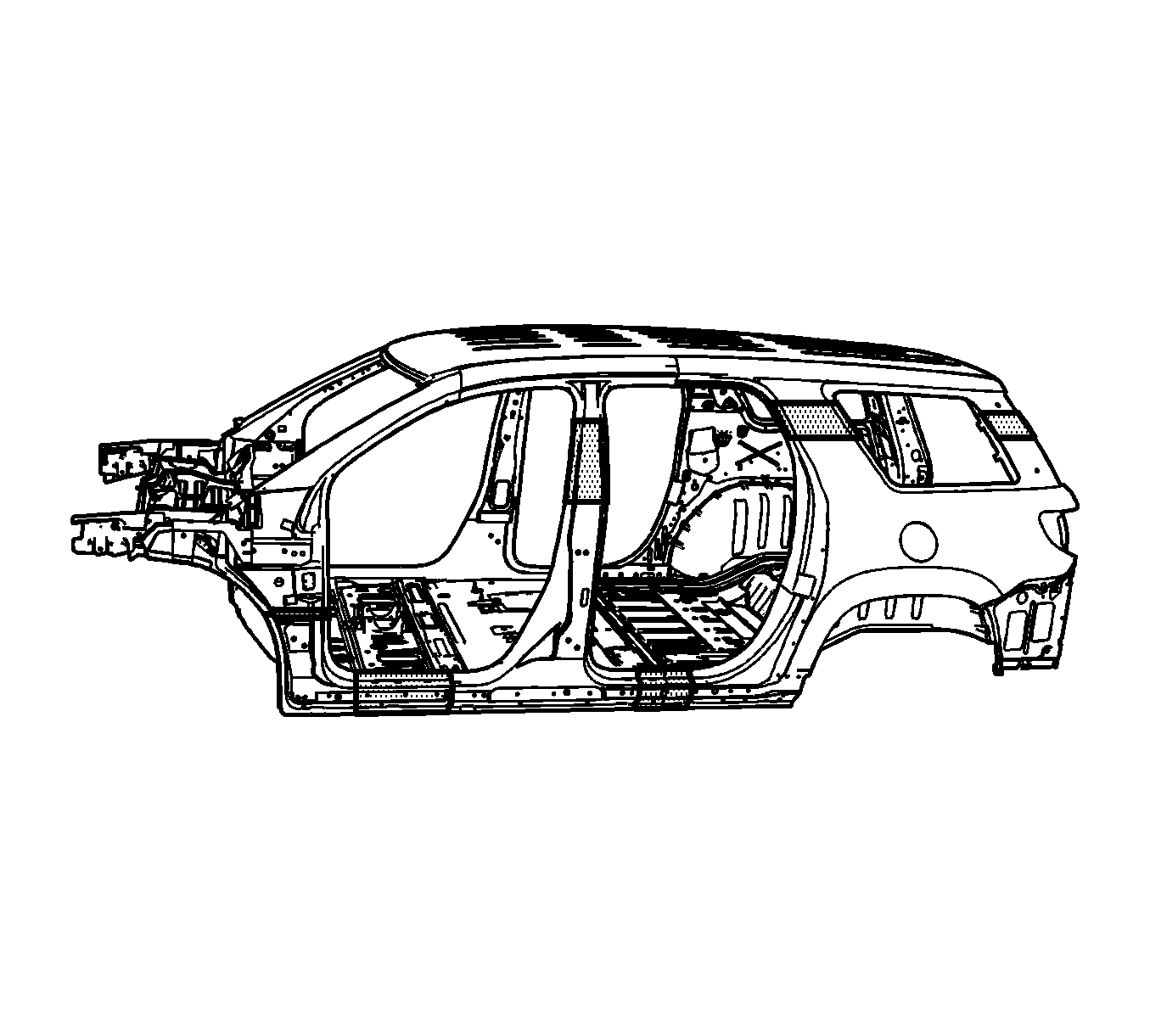
Important: The door frame can be replaced at the factory seams, but requires the removal of the windshield, roof, and quarter panel. The sectioning procedures have been developed as a more cost-effective alternative to complete replacement. The specific area to be sectioned is determined by the extent of the damage to the vehicle.
Caution: Refer to Foam Sound Deadeners Caution in the Preface section.
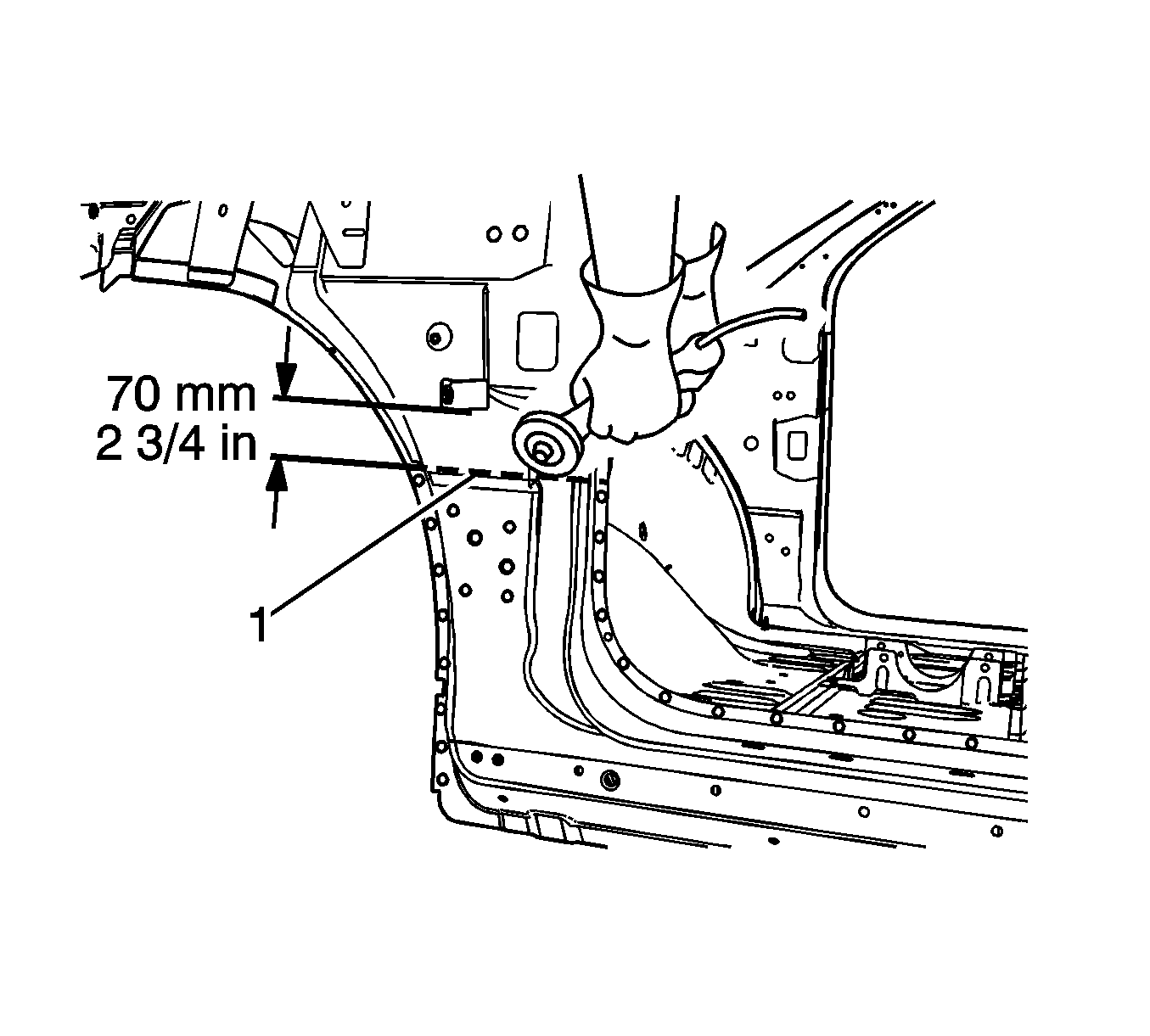
Important: Do not damage any inner panels or reinforcements.
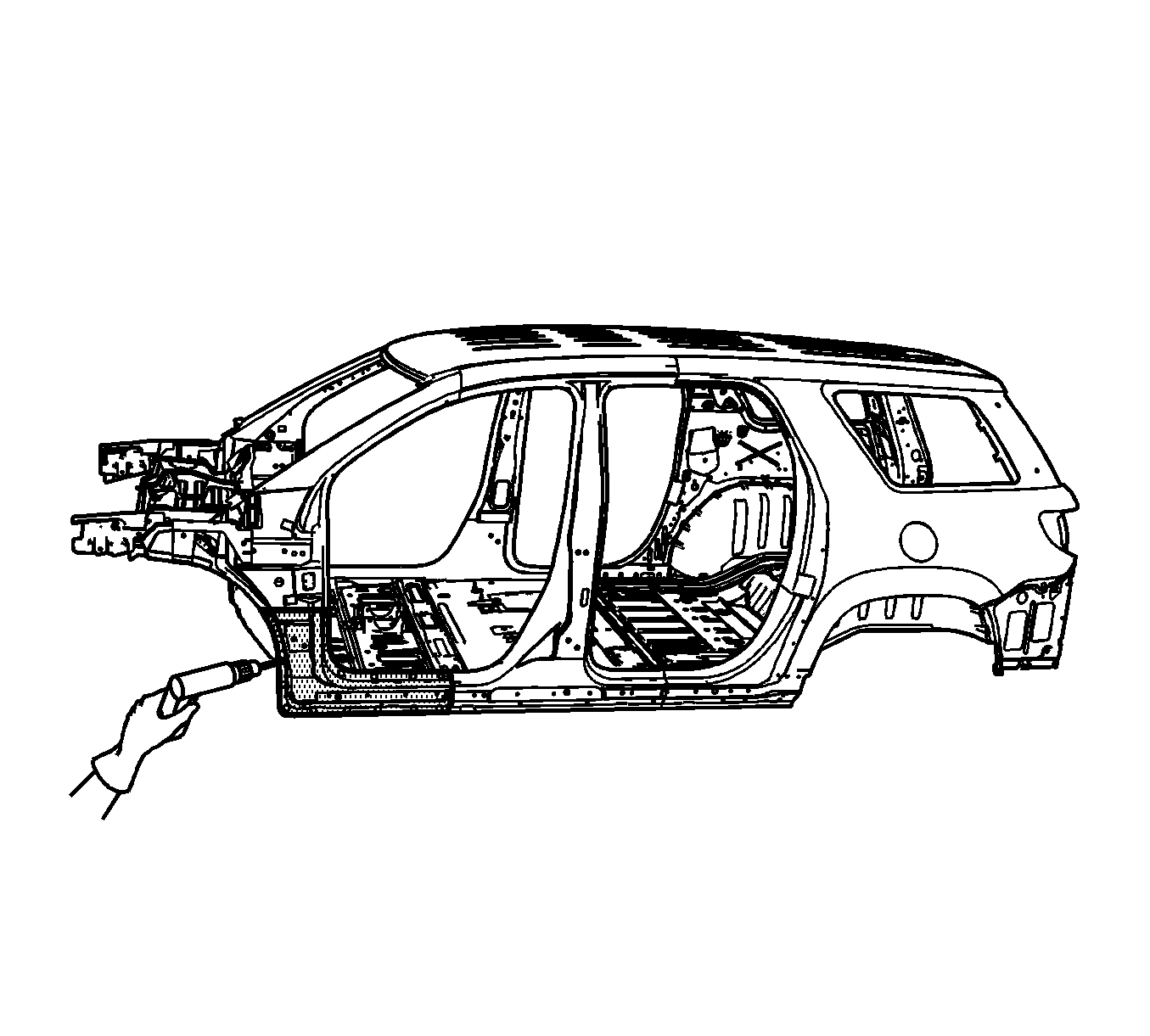
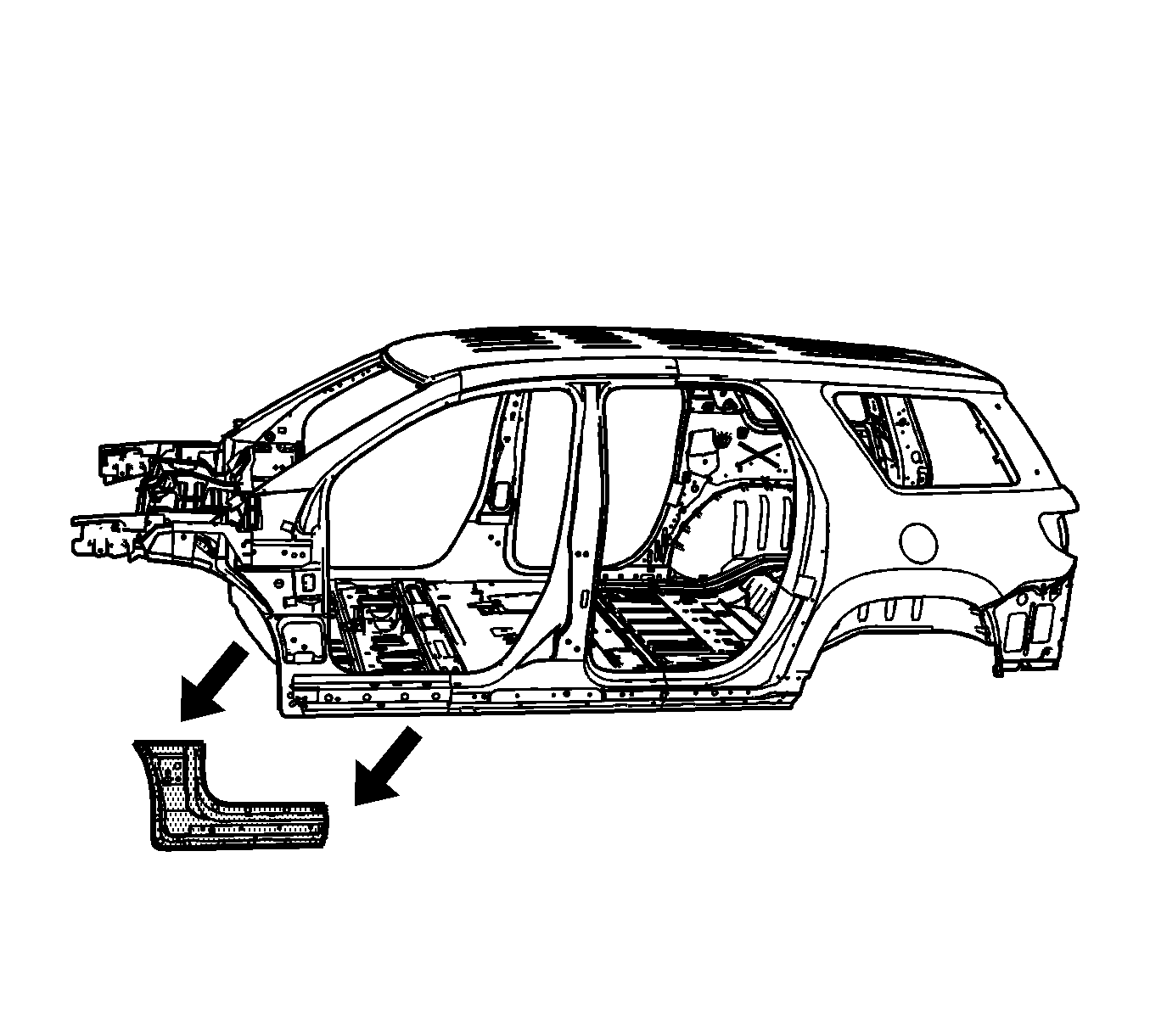
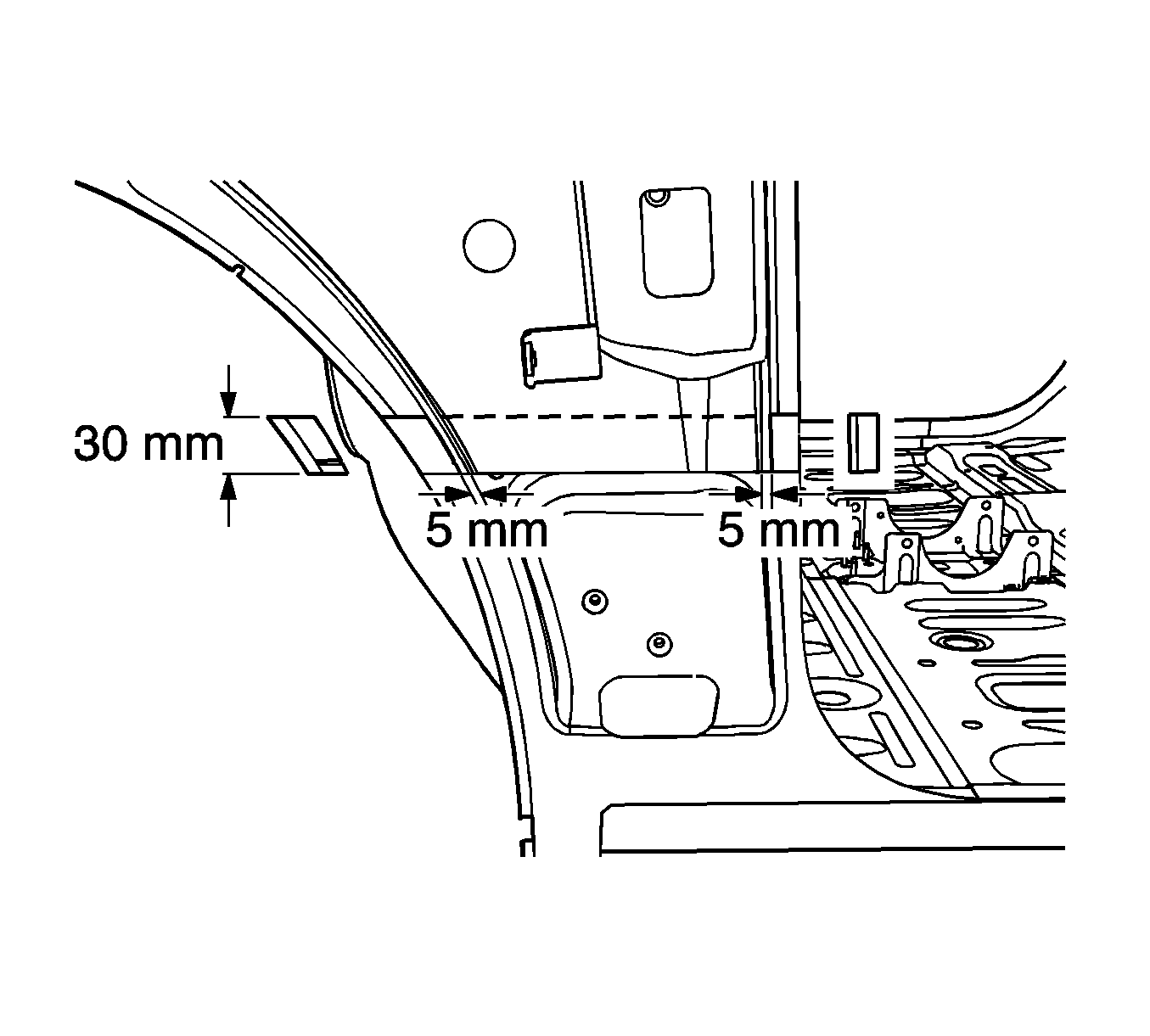
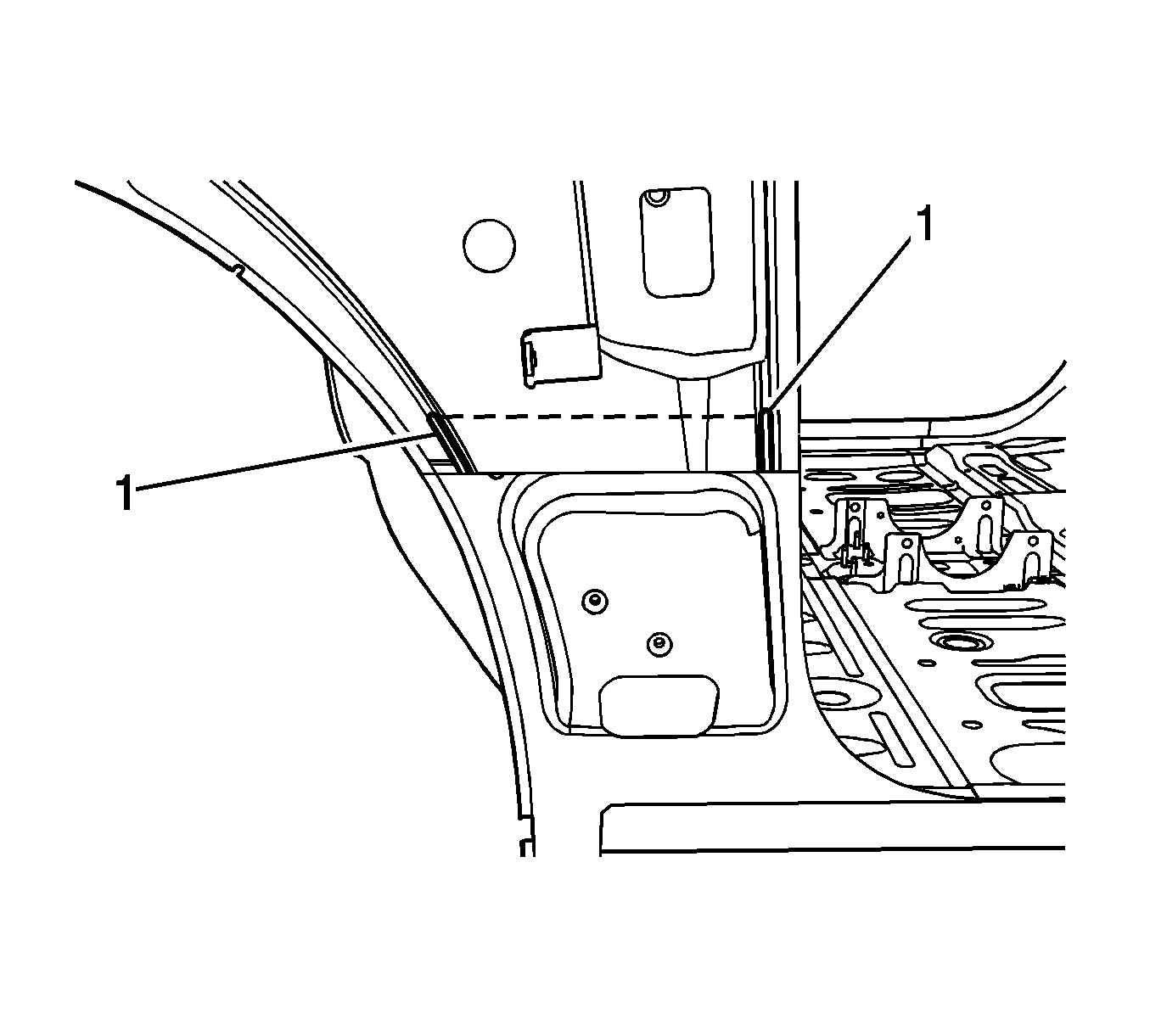
Installation Procedure
- On the service body side, measure 40 mm (1 9/16 in) down from the lower fender bracket. Mark a horizontal line. Cut the hinge pillar along this line.
- Perform additional sectioning procedures as necessary to remove the unused areas of the service part.
- Drill 8 mm (5/16 in) plug weld holes in the service part, as necessary, in the locations noted from the original panel and along the sectioning cut.
- Prepare all attachment surfaces, as necessary.
- Apply GM-approved Weld-Thru Coating or equivalent to all mating surfaces. Refer to Anti-Corrosion Treatment and Repair .
- Position the hinge pillar to the vehicle using 3-dimensional measuring equipment. Clamp in place.
- Plug weld accordingly.
- Clean and prepare all welded surfaces.
- Apply the sealers and anti-corrosion materials to the repair area, as necessary. Refer to Anti-Corrosion Treatment and Repair .
- Paint the repair area. Refer to Basecoat/Clearcoat Paint Systems .
- Install all related panels and components.
- Connect the negative battery cable. Refer to Battery Negative Cable Disconnection and Connection .
- Enable the SIR system. Refer to SIR Disabling and Enabling .
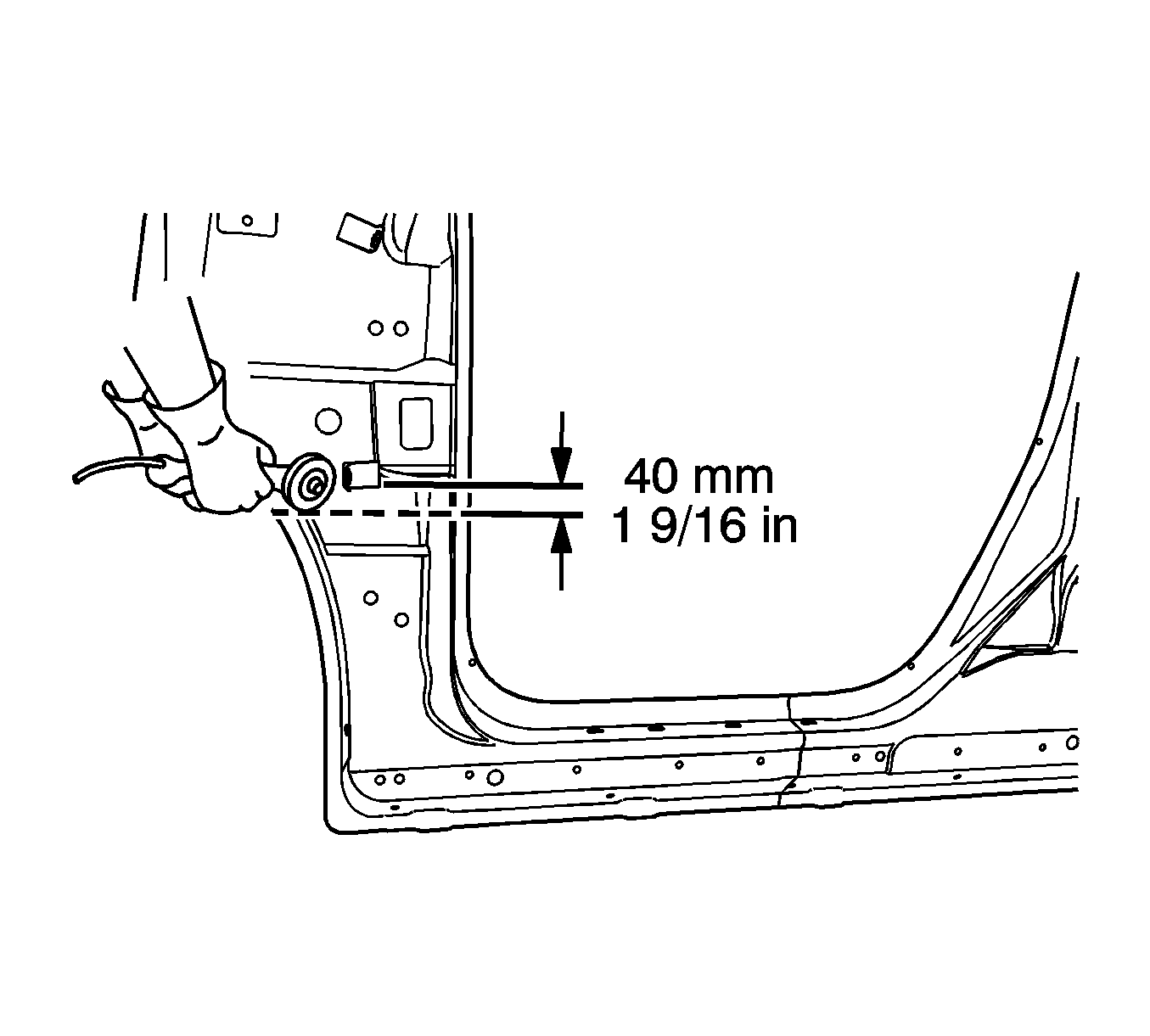
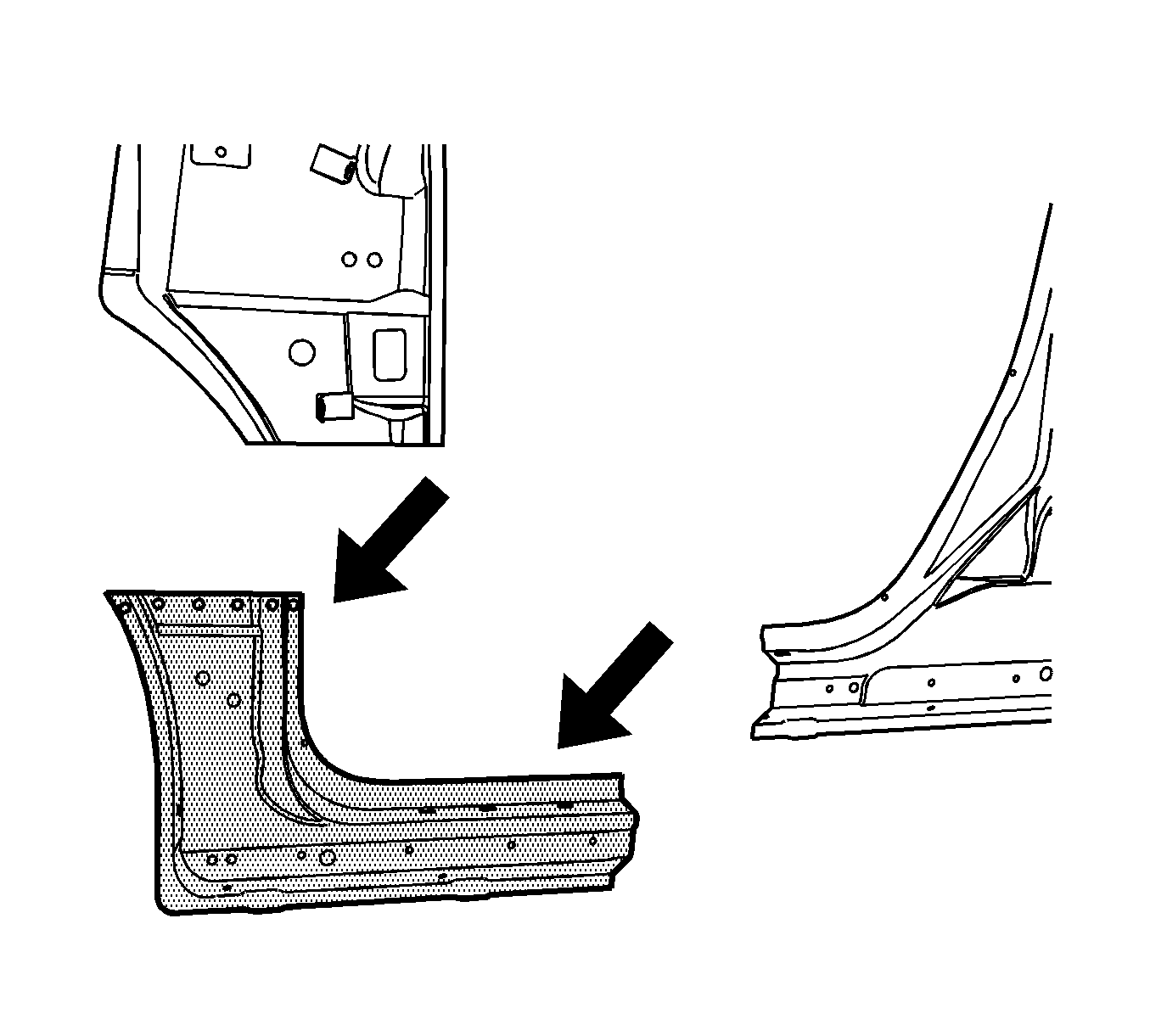
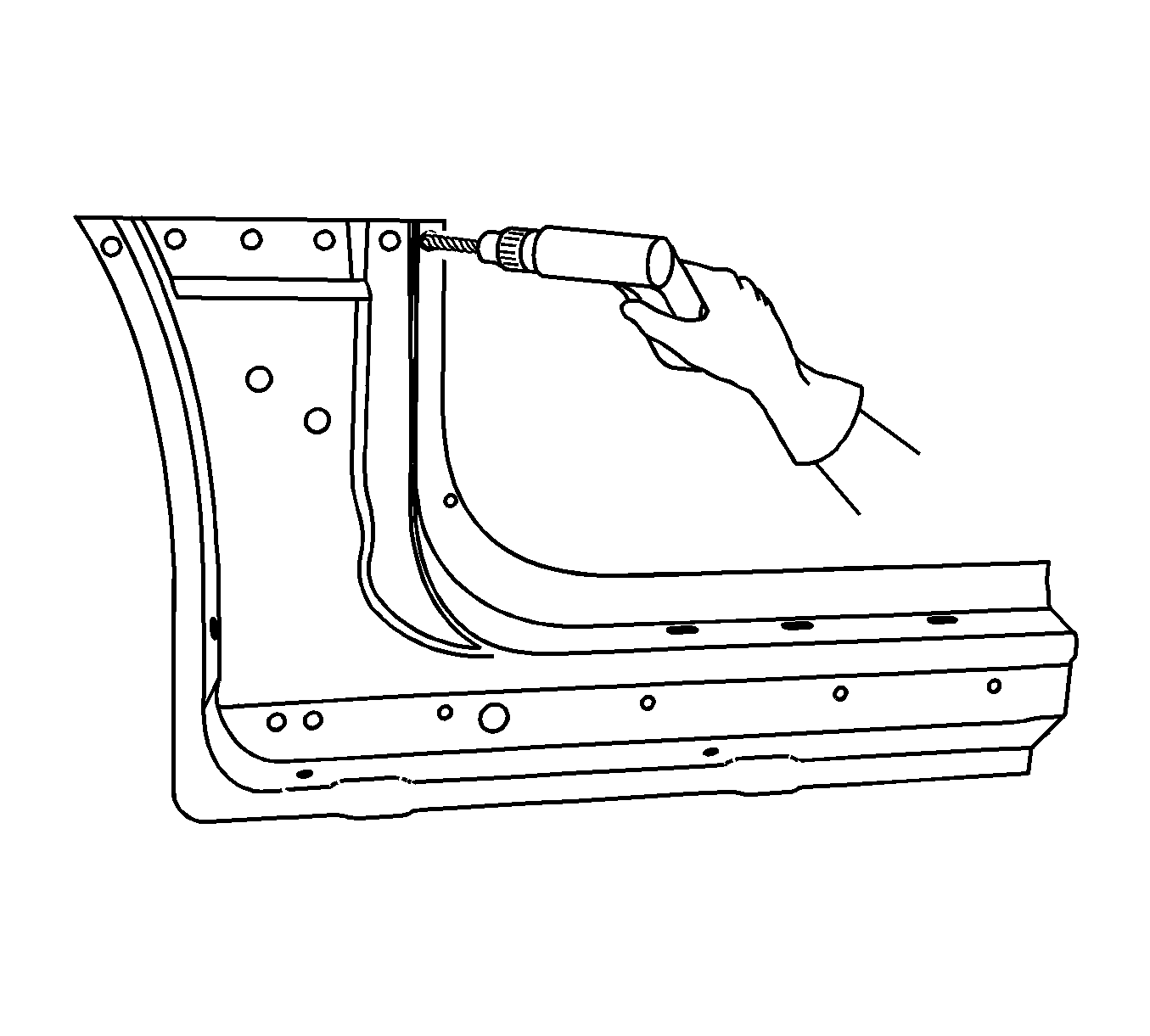
Important: If the location of the original plug weld holes cannot be determined, or if structural weld-thru adhesive was present, space the plug weld holes every 40 mm (1 ½ in) apart.
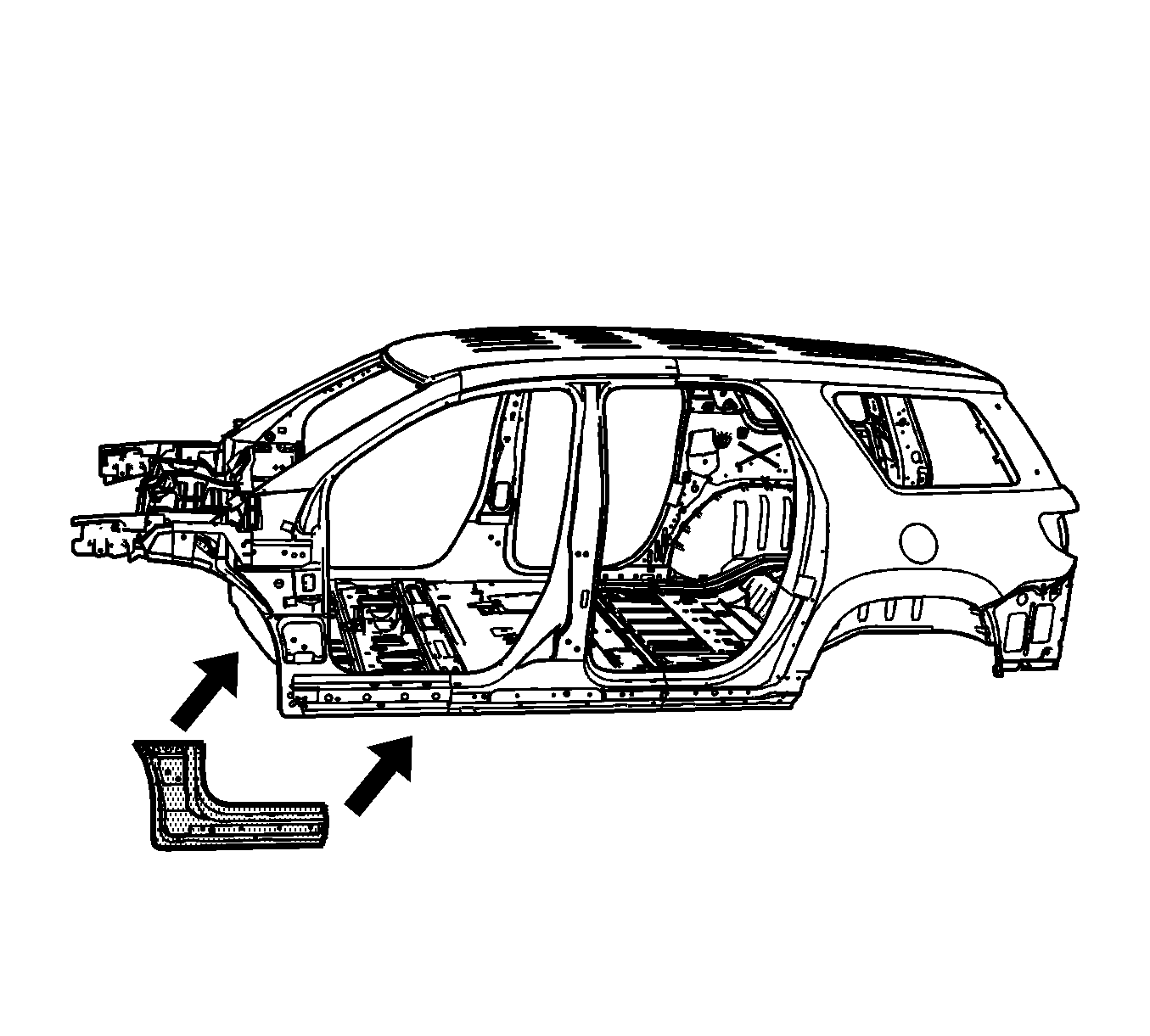
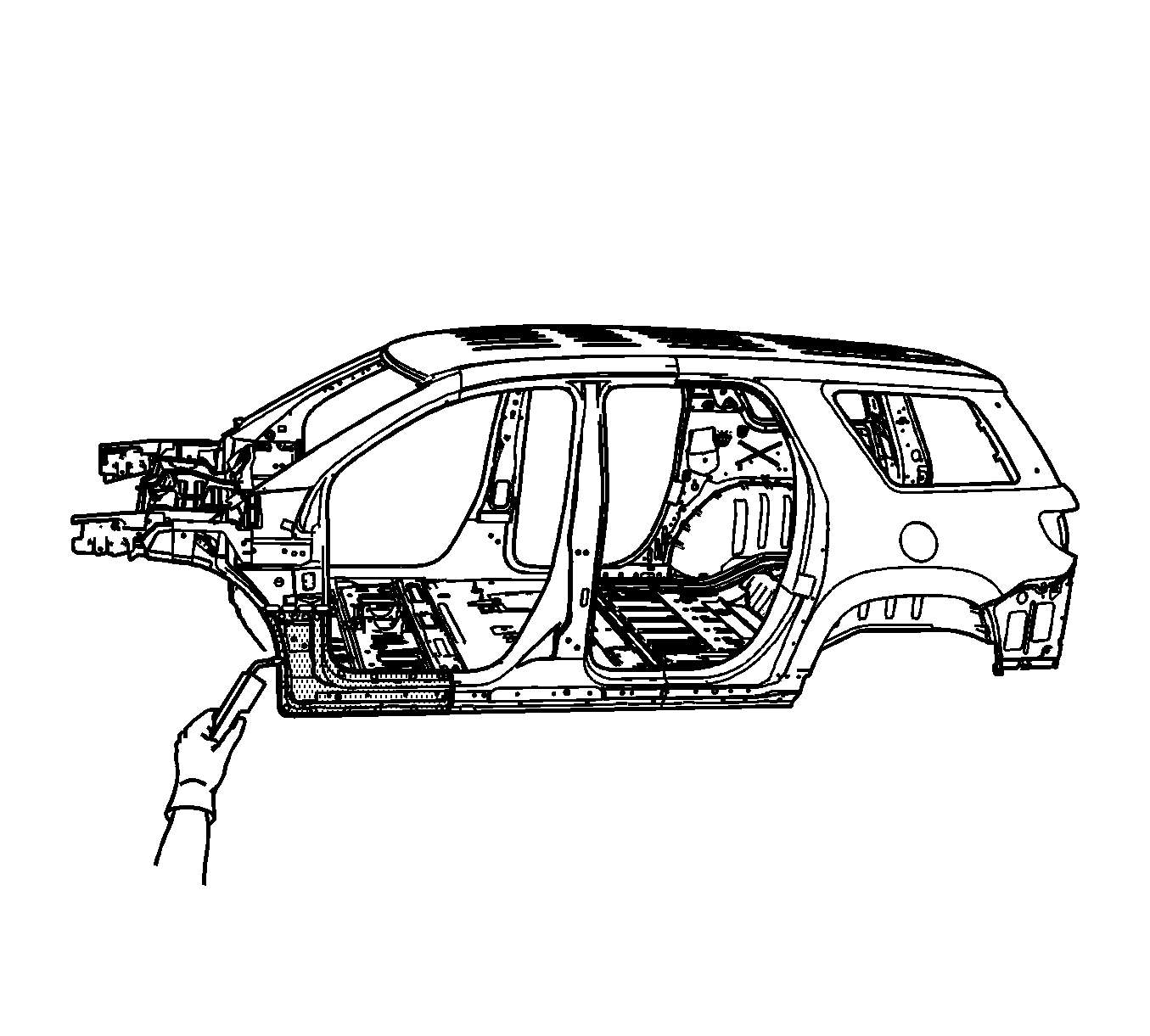
Important: To create a solid weld with minimum heat distortion, make 25 mm (1 in) stitch welds along the seam with 25 mm (1 in) gaps between them. Complete the stitch weld.
